You are going to love this one!! Sweet tooth satisfied!!!
I used Clean Simple Eats Maple Donut flavor protein powder (code ALICIAE) and it turned out amazing!

You are going to love this one!! Sweet tooth satisfied!!!
I used Clean Simple Eats Maple Donut flavor protein powder (code ALICIAE) and it turned out amazing!


I get this question a LOT! And the answer is YES!! Especially on a lower body day! It is typically something very simple and light. Overnight oats with protein powder and berries, eggs and berries, eggs and toast, greek yogurt and fruit, protein bar or protein shake if I’m short on time (just being honest!).
I also eat after my workout – typically greek yogurt with 1/2 scoop of protein powder (this is also when I do my creatine) and apple slices.
Due to the nature of how I move my body, I personally find it crucial to eat before my workouts. My body tells me that’s for sure!! Each person is different.
Easy Overnight Oats
1/4 cup oats
1/2 scoop Protein Powder (I love CLEAN SIMPLE EATS! Code ALICIAE)
Almond milk (eyeball it)
1 T Almond Butter or CLEAN SIMPLE EATS Butter I love!!!! (use code ALICIAE)
Set it in the fridge overnight. Add berries of choice in the morning and enjoy!
Women in perimenopause/menopause face unique physiological changes that can make it particularly beneficial to eat before working out.
Here’s why:
Hope this helps!!! Happy Lifting!
LOVE YOU!
If you love sugar as much as I do, you need something to salsify that sweet craving!! Here’s a free recipe from me to you that will satisfy that sweet tooth!! I hope you love it!!! (I love Lily’s SF chips!)
For protein powder I love CLEAN SIMPLE EATS!! Use code ALICIAE for 10% off!!

Yes you can RECOMP your body!! Through patience and consistent work! Here are the deets!
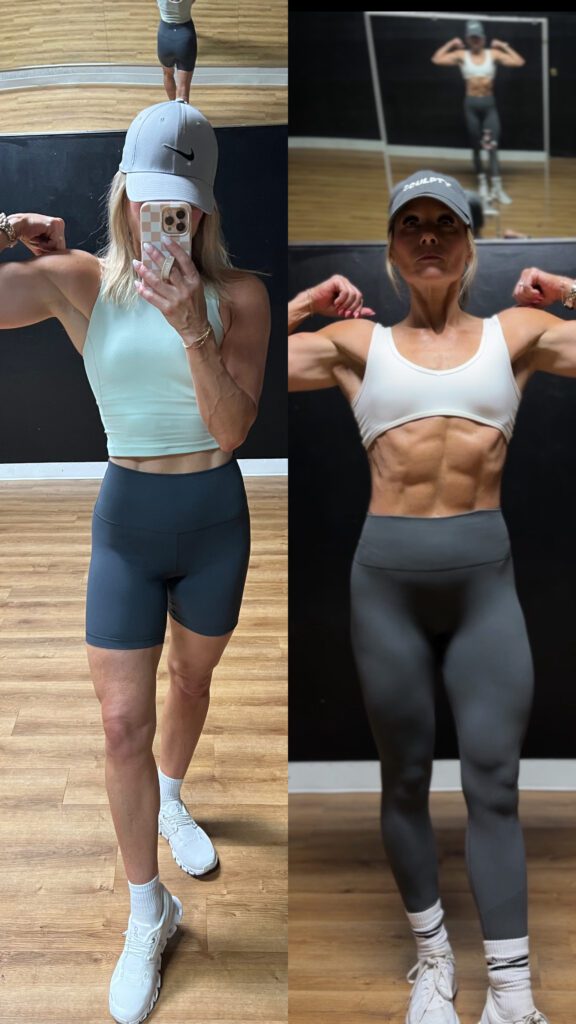
Body recomposition involves simultaneously building muscle and losing fat.
I began a cut (eating in a caloric deficit to lose weight) in October of 2022 and finished February/March of 2023.
From that point I wanted to RECOMP my body!
This meant staying at the same bodyweight but building muscle while losing fat!
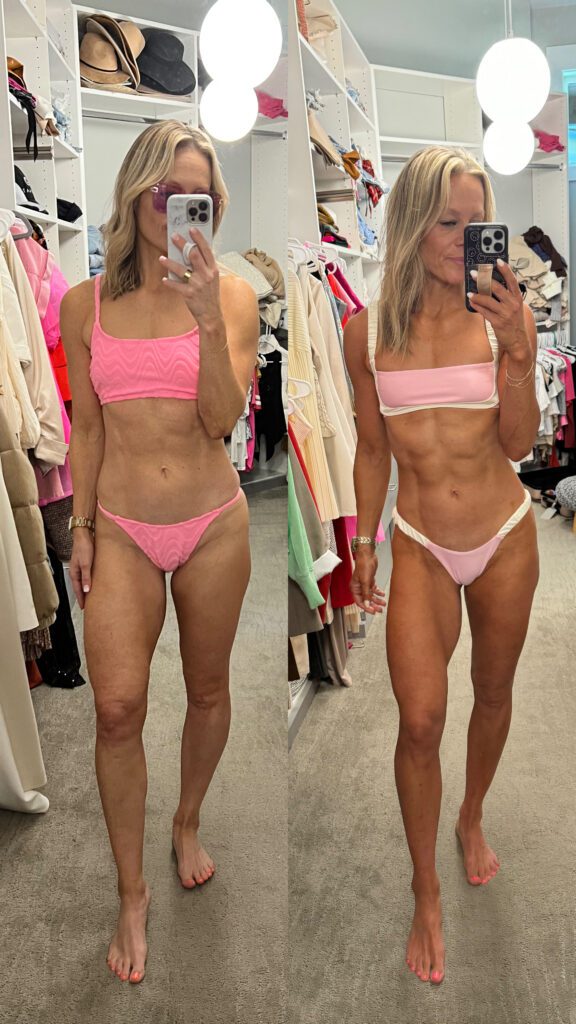
Here’s a comprehensive guide on how to achieve body recomposition:
This is a lifestyle! This takes time and patience. It takes laser focus and you will see results. Take those progress photos and blow your own mind!
You can do this!!! You’re amazing and I love you!!
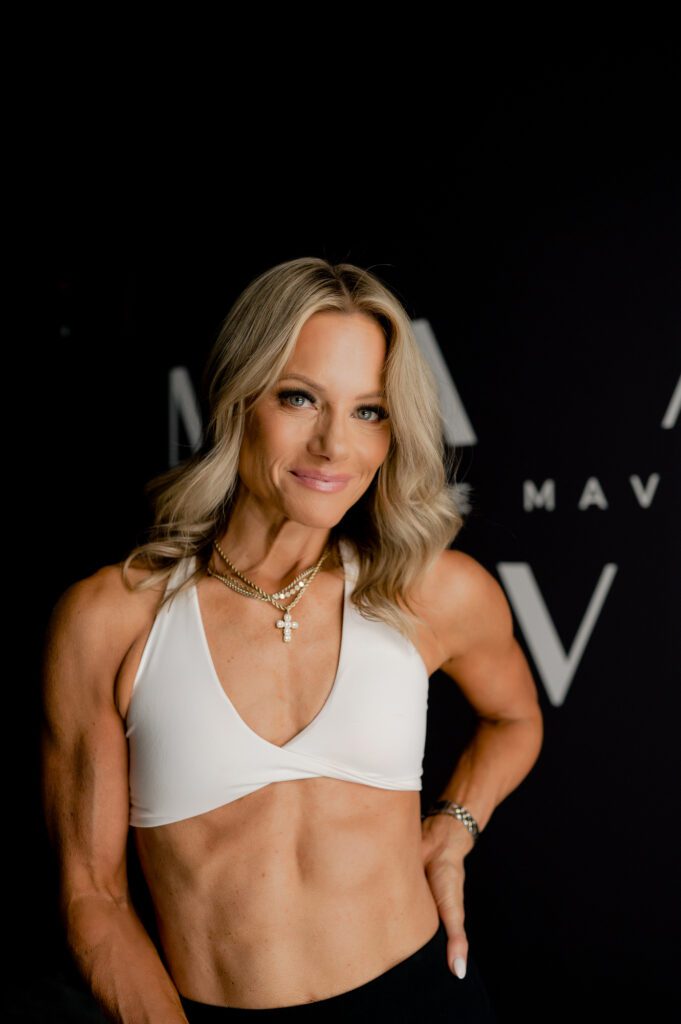
Here is a basic back day that will build that SEZZY back! Let’s goooo!
Complete all sets for each movement before moving onto the next. The last 2 reps should be difficult to complete while still maintaining form.
Pull-ups (assisted or BW)
3 sets of 6-9 reps
Underhand (supinated) lat pulldown
3 sets of 10-12 reps
Close (neutral) grip cable row (Double D handle)
3 sets of 10-12
Single arm DB row (non working arm hold the back of an incline bench)
3 sets of 10-12 reps each arm
Bent over Barbell row
(Smith machine or EZ bar or barbell)
2 sets of 10 reps
Straight arm pulldown
(Use the rope or bar at cable machine)
3 drop sets
Do 10 reps, drop the weight and do 12 reps for 3 sets!
Back attack baby! Enjoy!
If this left you wanting more check out my APP for more lifts!!!

This is a hard one for me because I go at a certain cadence with most of my fitness endeavors! However, I will always listen to my body and sense when it’s time for a deload. This will help gains in the long run!
Here are some signs that it might be time for a deload week:
When planning a deload week, consider the following approaches:
How often you need a deload week can depend on various factors, including your training experience, intensity, and volume. Generally, every 4-8 weeks is common, but listen to your body and adjust as needed.
Incorporating deload weeks into your training plan helps prevent burnout, reduce the risk of injury, and keep your progress on track over the long term.
Listen to your body! It feels like a great reset and your body will thank you!
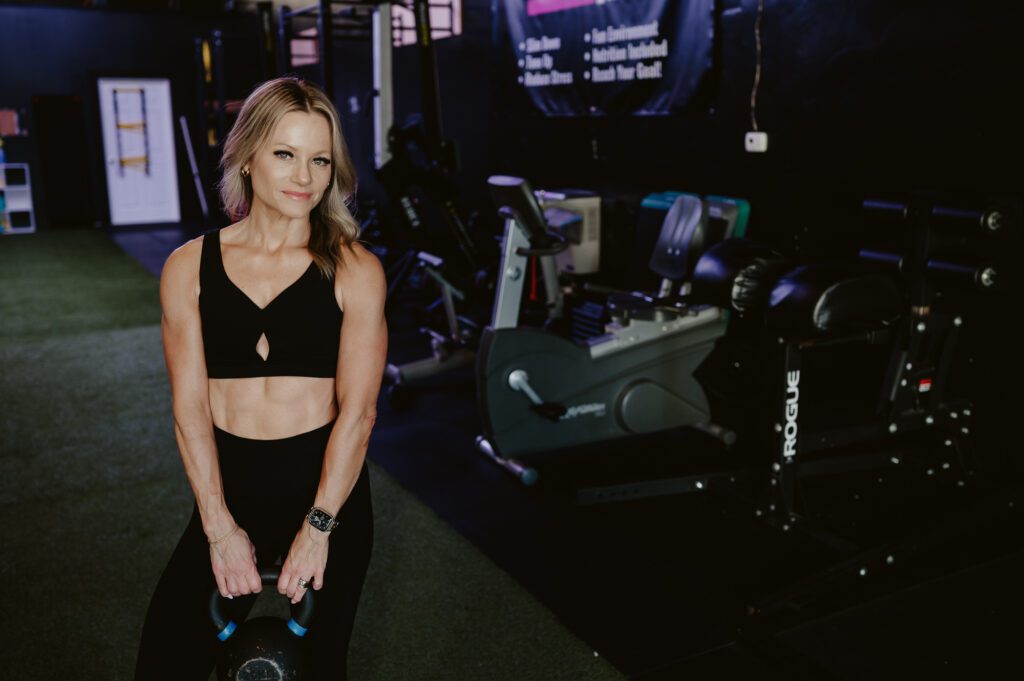
This used to be one of my least favorite days and now it’s one of my favorites! Once I started working lower body 3 days a week along with proper nutrition, I saw big changes! I focus on glutes and hamstrings 2 days a week.
Here are my top exercises for growing my gluten and hamstrings:
Hip Thrust (machine or barbell) – 5 sets (building) 12, 10,10,9,8
Barbell or Dumbell Romanian Deadlifts – 4 sets of 8-10 reps
Lying Hamstring Leg Curl – 4 drop sets 8-10 reps then drop the weight then do 8-10 more!
Bulgarian Split Squats – 4 sets of 10-12 reps each leg
Weighted Hyperextensions – 4 sets of 15 reps
Cable Kick Backs – 3 sets of 15 reps each leg
Abductor Machine – 2-3 sets 25 reps – last set burnout!
Try this 1-2 days a week (with enough rest in between days), eat in maintenance or surplus and watch the glutes and hamstrings grow!!!
If you’d like to try one of my lifting programs click HERE!
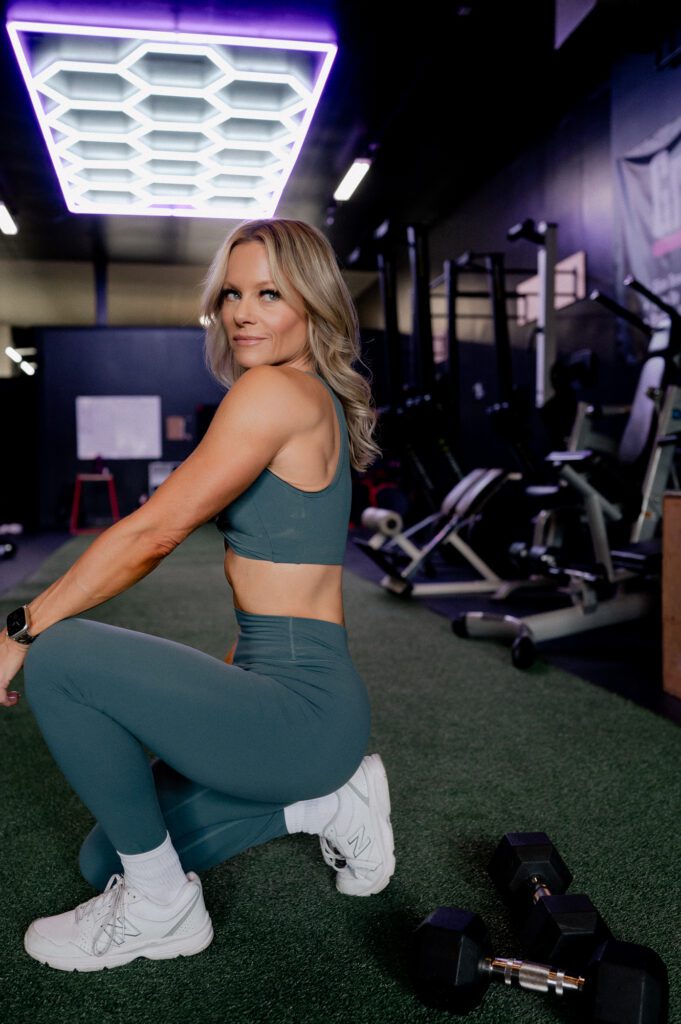

It’s only taken me….A LIFETIME. JK but really! It’s for sure come with a lot of attempts and failures.
When I quit alcohol is when the sugar addiction really came in more hot for me. I realized pretty soon that I needed to get this under control and here is what really helped me: I asked how this would make me feel after consuming? Would I feel better in the long term? Or worse? Was this going to give me energy or sap my energy? How is this going to fuel me throughout my day, for my workout, afternoon crash? How is this going to help me achieve my long term goals? Can I find a substitute?
Quitting sugar can be challenging, but it’s definitely achievable with the right approach and mindset. Here are some steps you can take to gradually reduce your sugar intake and eventually quit sugar altogether:
Remember, quitting sugar is a process, and everyone’s path may look different. Find what works best for you and focus on making sustainable, long-term changes to your eating habits.
I did it cold turkey HA! YIKES!
But If you want to take a gradual approach try this:
By taking gradual steps and making sustainable changes, you can conquer and create new healthy habits.
WE GOT THIS!!!!
Try this recipe in the Ninja Creami:
1.5 cups Almond milk (or milk of your choice)
1-2 Scoops Chocolate Peanut Butter Protein Powder (use code ALICIAE for 10% off!)
2 Tablespoons Vanilla Sugar Free Jello Pudding
Freeze for 24 hours
Mix on “Lite Ice Cream” setting
Mix on “Re-spin” setting
Top with zero sugar Reddi Wip and ENJOY!!!!! DELICIOUS! Sugar cravings and protein goals satisfied!

It can be frustrating when you feel like you’re doing everything to make changes with your fitness and health and not seeing the results you desire.
Here are are 10 things that might just be holding you back!
Everyone’s journey is unique, and it’s essential to focus on overall health and well-being rather than just the number on the scale.
You can do this!!!!


This is a question the comes through A LOT! When I first decided to really track my food I determined what my macros needed to be for a caloric deficit but a SLIGHT deficit. This was about 300-400 (aim for 10%) calories daily below maintenance calories. I wanted to lose around 10-12 pounds but continue to strength train the entire time. So it was important to keep my protein grams high in order to maintain muscle. I consumed 125 grams of protein daily!
So often I see women go on drastic calorie cuts and lose weight without even realizing they have lost muscle, and their body is in starvation mode. I wanted to do this with a smart, methodical, lifestyle approach. Once I was at my target bodyweight after 3 months of a cut, I bumped up my calories to maintenance, keeping my protein optimal for those muscles. As I continued on in this process I would bump up my calories slightly over time as my body put on more muscle and demanded more. It’s been pretty cool science experiment! I’ve felt satiated (thank you protein!), fueled for my workouts, and found foods that I love and fit into my daily macros so I can maintain this as a LIFESTYLE!! I can see myself doing this for years to come because I love the way I eat and enjoy my food!!! I’m currently in maintenance calories.
Here’s a breakdown of how it works and a link to a FREE CALCULATOR to give you a baseline of where to start with your macros! This is the FOOD SCALE I use!
Calculating macros (macronutrients) involves determining the appropriate ratios of proteins, carbohydrates, and fats in your diet based on your goals, such as weight loss, muscle gain, or weight maintenance. Here’s a general guide on how to figure out your macros:
Remember, these are general guidelines, and individual needs may vary based on factors like metabolism, activity level, and overall health. It’s always a good idea to consult with a healthcare professional or a registered dietitian for personalized advice. Additionally, tracking your food intake using apps or journals can help you stay on track with your macro goals.
I personally love the MACROS FIRST app!!!
If you need help hitting your protein:
I love Clean Simple Eats protein powders. SO many delicious flavors! Use code ALICIAE for 10% off!
For protein bars G2G Bars are delicious! Use code MIDLIFEMAVEN for 15% off!
I follow my own strength training PROGRAMS. Lot’s to choose from! I also have recipes in the subscription area of my app.
I hope this gave you some insight into a deeper understanding of how to approach macros. Truly I love this approach because it allows me to fit the foods I love which create long term sustainability and makes it a lifestyle. If you do NOT want to track, make sure you get a palm size amount of protein, fist size starch, thumb tip size amount of fat at each meal! Or you can just track your protein grams. Start with 100 grams daily and work to hit that target!
You got this!!
